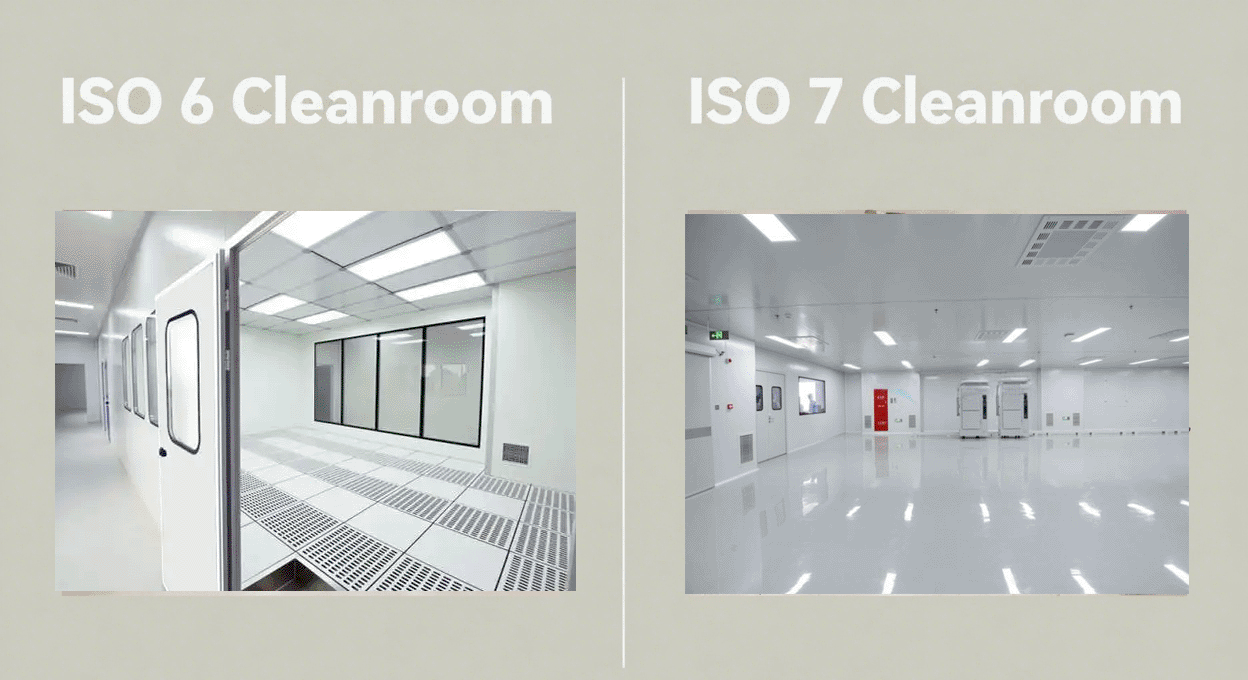Understanding the key distinctions for controlled environment decision-making
Understanding the Differences
Understanding the differences between ISO 6 and ISO 7 Cleanrooms can significantly impact decision-making for businesses operating in controlled environments. Let’s explore these distinctions and how they cater to different industry needs with efficiency and precision.

ISO 14644-1 Classifications Overview
CleanRoom Classifications under iso 14644-1 provide a comprehensive framework for maintaining air quality by specifying allowable particle counts. These standards help industries ensure purity levels suitable for various manufacturing and research processes. Companies like GCC®️ and Deii®️ often leverage these classifications to design state-of-the-art cleanrooms that comply with global standards, facilitated by experts such as Deiiang Jason.peng.
ISO 6 Cleanroom
ISO 6 Cleanrooms are designed for environments requiring a high level of cleanliness. They permit up to 35,200 particles per cubic meter. These cleanrooms are suitable for sectors like pharmaceutical manufacturing and certain Electronics manufacturing where purity is paramount.
Features:
- Particle Count: Up to 35,200 particles per cubic meter.
- Advantages: Essential for highly sensitive processes where contamination must be minimized.
- Applications: Ideal for sterile pharmaceutical production and microelectronics.
ISO 7 Cleanroom
ISO 7 cleanrooms allow for up to 352,000 particles per cubic meter. While still maintaining strict control over environmental conditions, they are less stringent compared to ISO 6 and cater to processes that do not require as high a level of particulate control.
Features:
- Particle Count: Up to 352,000 particles per cubic meter.
- Advantages: Balances cleanliness with cost-effectiveness for less sensitive applications.
- Applications: Used in laboratories, general medical device manufacturing, and some food processing.
Key Differences Between ISO 6 and ISO 7
| Category | ISO 6 | ISO 7 |
|---|---|---|
| Particle Count | Up to 35,200 particles/m³ | Up to 352,000 particles/m³ |
| Air Change Rates | 150-240 air changes per hour | 60-90 air changes per hour |
| Cleanliness Level | Higher, more stringent | Lower, less stringent |
| Construction Costs | Higher due to advanced systems | Lower, more cost-effective |
| Primary Applications | Pharmaceuticals, microelectronics | Laboratories, medical devices, food processing |
Dust Particle Differences
The primary distinction between ISO 6 and ISO 7 cleanrooms lies in the number of allowable particles. ISO 6 is ten times cleaner than ISO 7, requiring more sophisticated filtration systems. Brands like GCC®️ implement comprehensive monitoring technologies to ensure compliance with these stringent particle requirements.
Air Change Rates
ISO 6 cleanrooms typically require 150 to 240 air changes per hour, while ISO 7 environments demand approximately 60 to 90. These frequent air changes are crucial for maintaining air purity. Deii®️ products often incorporate advanced HVAC designs to meet the high air exchange needs efficiently.
Industry Applications
ISO 6 cleanrooms are indispensable for operations involving hazardous materials, advanced electronics, and pharmaceuticals, offering heightened protection against contamination. ISO 7 serves industries where slightly higher particle counts are acceptable, like certain healthcare sectors and electronics that are less sensitive to minor contaminations.
Construction Costs
Building ISO 6 cleanrooms involves higher costs due to the need for advanced filtration and airflow systems. ISO 7 cleanrooms, while still a significant investment, are generally cheaper to construct and maintain due to their less stringent requirements. Deiiang Jason.peng ensures that the design of these cleanrooms balances cost with compliance and operational efficiency.
Which Level is Higher, ISO 6 or ISO 7?
In terms of cleanliness and control, ISO 6 is the higher grade, maintaining a stricter environment than ISO 7. It is designed for processes where utmost purity is essential, while ISO 7 offers a practical solution with more lenient controls.

Conclusion
ISO 6 and ISO 7 cleanrooms serve distinct purposes, catering to industries with varying levels of cleanliness and contamination control needs. Companies can select the appropriate class based on their specific operational requirements, guided by the expert solutions provided by brands like GCC®️ and insights from designers like Deiiang Jason.peng. Understanding these differences is crucial for optimizing cleanroom performance and ensuring compliance with international standards, ultimately supporting safe and efficient production practices.
© 2025 Cleanroom Standards Guide. All rights reserved.
 +86 18186671616
+86 18186671616 Jason@cleanroomequips.com
Jason@cleanroomequips.com
 MENU
MENU



